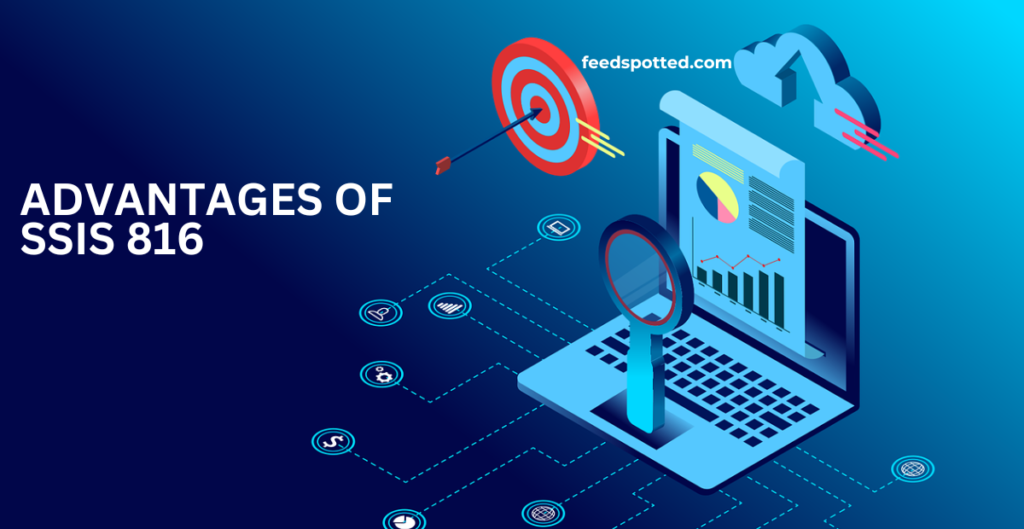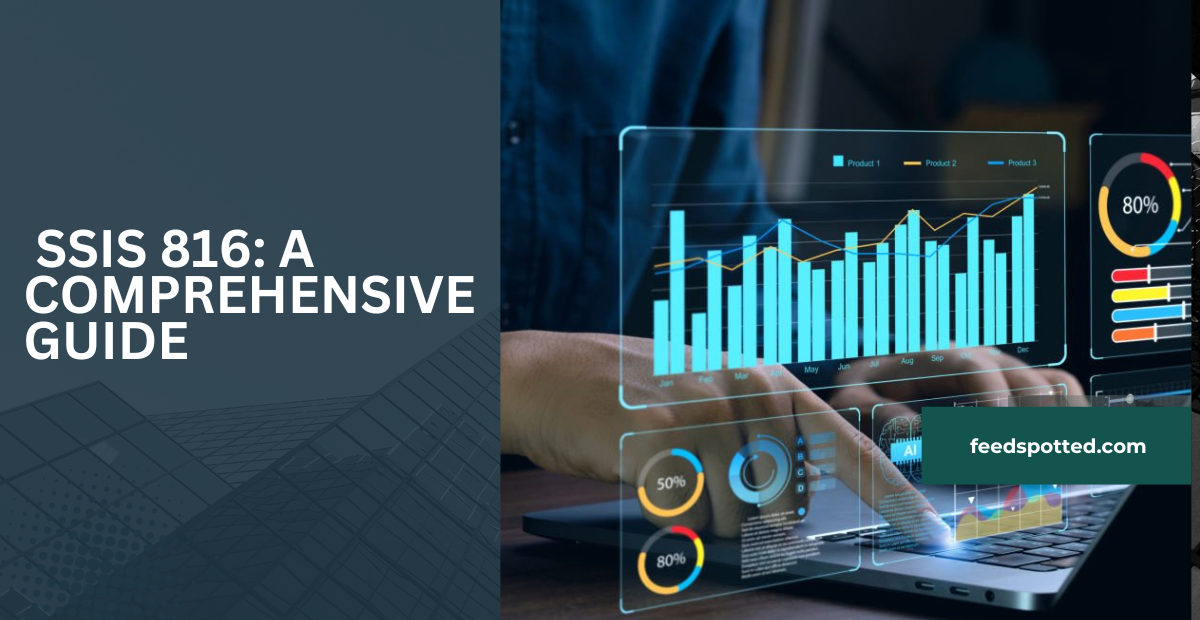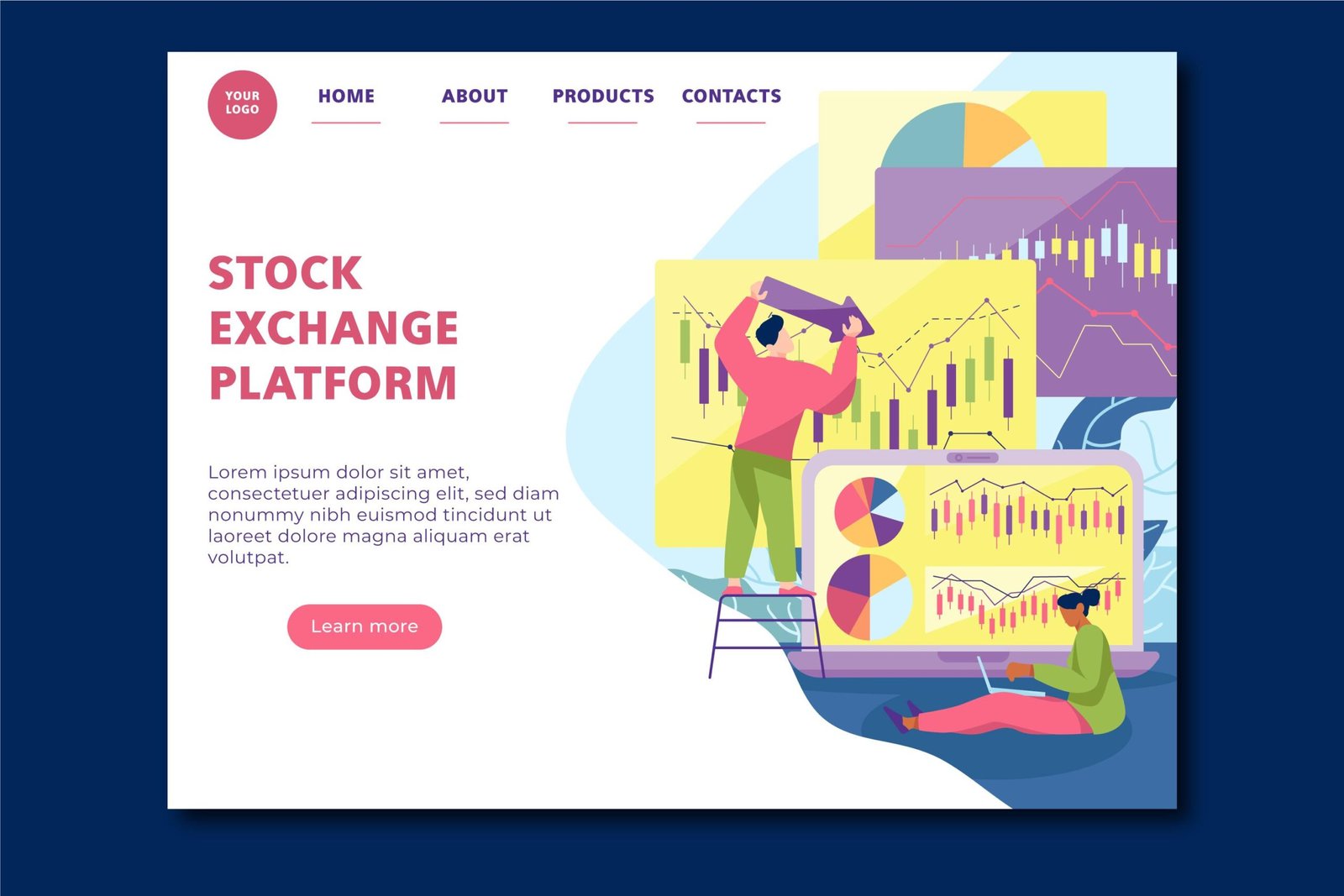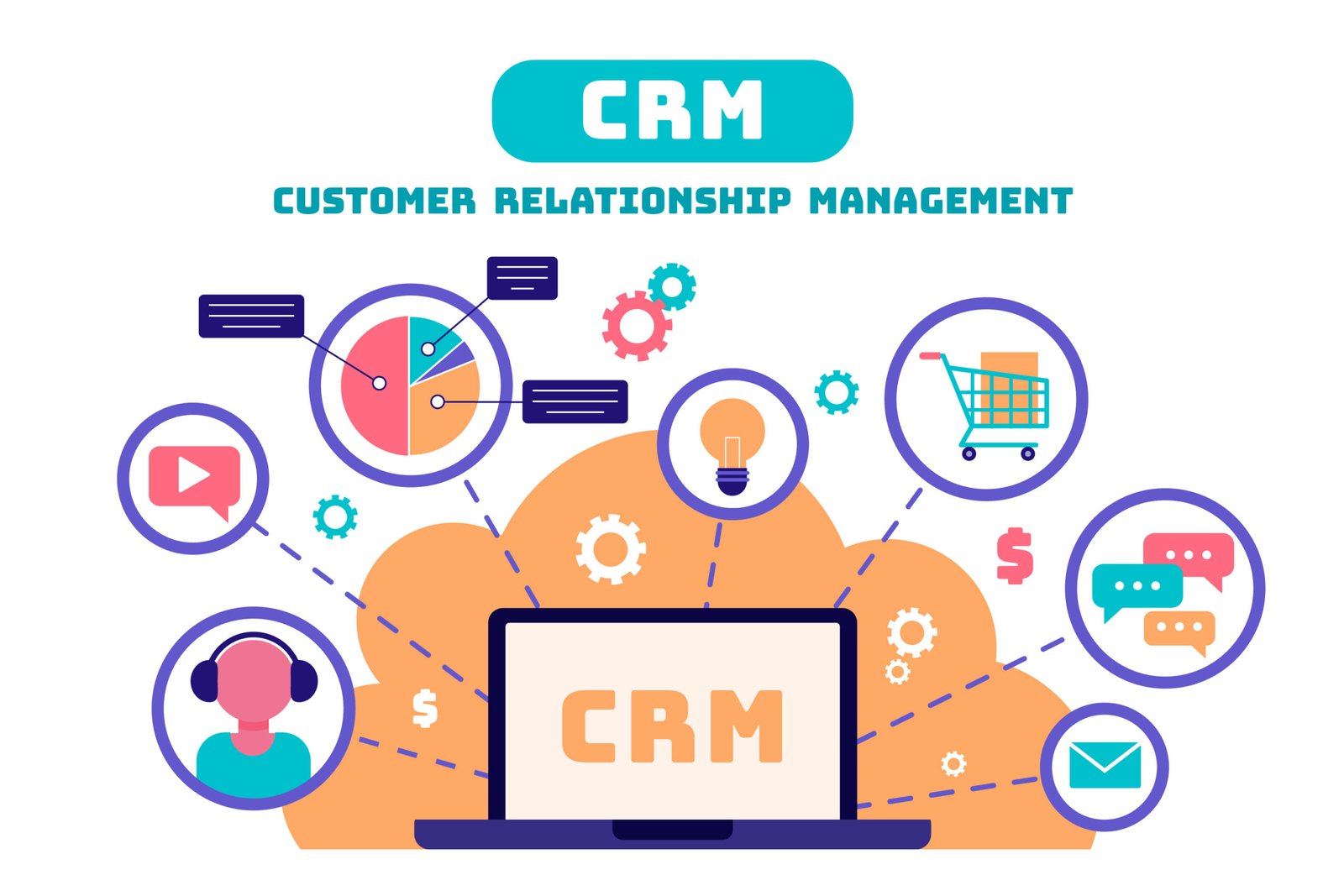Introduction
Overview of SSIS 816
As a new brand of SSIS, SSIS 816 is more advanced than the existing type of SQL Server Integration Services. Thus, has become a necessity for companies that involve themselves in processes that deal with huge amounts of data. The tool is specially designed to be used as a data integration, transformation, and data migration tool. Complex data management is effectively dealt with in terms of data workload with the help of . Features, use, and advantages of SSIS 816 that is used as a data integration and transformation tool will be covered in this blog.
What is SSIS 816?
SSIS 816 is a data integration tool of Microsoft. It can be employed to carry out a number of tasks involving information.There is extraction of data, transformation of data and the loading of data from source systems to destinations. As such, it has been designed in a manner that makes automation and integration of any project a rather simple proposition.
Key Components of SSIS 816
SSIS 816 is composed of several key components. Control flow, data flow, and event handlers are among them. Control flow manages the execution of tasks. Data flow handles the transfer of data between sources and destinations. Event handlers react to things that happen while a package is being executed.
Features of SSIS 816
Powerful Data Integration
SSIS 816 is known for its powerful data integration capabilities. Data from different sources is combined and transformed effectively. Complex transformations are performed with minimal effort. The ability to integrate data from various sources makes SSIS 816 indispensable.
User-Friendly Interface
The interface of user-friendly. Drag-and-drop features are included, simplifying the design of data flows. Wizards guide users through complex configurations. Tasks are easily configure through dialogs and property windows.
High Performance and Scalability
High performance is a hallmark of 816. Large volumes of data are processed quickly. The tool is designed to scale with business needs. Performance is optimized through parallel processing and task prioritization.
Error Handling and Logging
Error handling in is robust. Errors are captured and logged automatically. Custom error-handling routines are created if needed. Logs provide detailed information about the execution of packages.
Data Cleansing and Transformation
It is a vital feature of. Data scrubbing is done and data is prepared and put into the target system. Cleaning is done on the inconsistencies and data quality is maintained. Some of the activities include; data cleaning and formatting, data pre-processing, and data transformation.
Applications of SSIS 816
Data Warehousing
It is perhaps one of the most used tools within the data warehousing systems with the ref. Data is collected from various sources and is housed in a single place. Consequently, constructions of data warehousing are facilitated, along with the general management of the created data stores. ETL steps refer to the preparation of data for analysis.
Business Intelligence
Business intelligence (BI) is enhanced by SSIS 816. Data is processed and transformed for reporting and analysis. BI tools rely on to provide accurate and timely data. Decision-making is supported by the insights gained from the processed data.
Data Migration Projects
Data migration projects benefit greatly from Legacy data is transferred to new systems with precision. Migration processes are automated to reduce manual effort. Itis transformed and validated during the migration process.
Data Integration Across Systems
It is across multiple systems is facilitated by SSIS 816. Different systems and platforms are connected seamlessly. Data is synchronized between disparate systems. Integration is achieved without disrupting existing workflows.
Benefits of Using SSIS 816

Automation of Data Tasks
Automation is one of the key benefits of . Repetitive data tasks are automated to save time and reduce errors. Scheduled tasks run without manual intervention. Business processes are streamlined through automation.
Improved Data Quality
SSIS 816 enhances data quality in a very big way. Data cleaning features would therefore provide an assurance that data is clean, having no errors. ETL removes inconsistency and redundancy for it is a crucial step in data transformation. Good data generates good decisions.
Cost-Effective Solution
SSIS 816 is a cost-effective solution for businesses. Existing infrastructure is utilized efficiently. The need for additional tools or software is minimized. Operational costs are reduced through automation and integration.
Flexibility and Customization
Flexibility is provided by SSIS 816 in handling various data scenarios. Custom packages are created to meet specific business needs. The tool is adaptable to different data environments. Customization guarantees that needs of the business are fulfilled.
Enhanced Decision-Making
Enhanced decision-making is a result of using SSIS 816. Data is transformed into actionable insights. Business intelligence reports are generated with accurate data. Reliable information serves as the foundation for decisions.
How SSIS 816 Works
Understanding the ETL Process
The ETL process is central to how SSIS 816 works. Data is extracted from various sources. It is then transformed according to business rules. Finally, the transformed data is loaded into the target system. Each step is handled efficiently by SSIS 816.
Control Flow and Data Flow
Control flow in SSIS-816 manages the sequence of tasks. The actual transfer of data between sources and destinations is handled by data flow. Control flow orchestrates the entire ETL process. Data flow ensures that data is transferred accurately and efficiently.
Error Handling Mechanisms
Error handling mechanisms are built into SSIS 816. Errors are captured during the execution of tasks. Specific actions are taken when errors occur. Custom error handling is also supported, allowing for greater flexibility.
Best Practices for Using SSIS 816
Designing Efficient Packages
Efficient packages are designed by following best practices. Unnecessary tasks and transformations are avoided. The use of parallel processing is encouraged. Packages are optimized for performance and scalability.
Ensuring Data Quality
One has to make sure that the data quality is good when performing operations with the help of SSIS 816. These two remain involved with data validation tasks that are included in packages. Data cleansing is usually done within the ETL paradigm as one of the phases. Timely and accurate data increases the chance of reporting accurate results.
Managing and Monitoring Packages
The packages themselves are the key components of the SSIS 816 and their managing and monitoring is critical to the overall success of the framework. Packages are set to run, as the name suggests, at the right time. They are employed to monitor the run of packages. The logs and reports are checked to monitor their performance continually for the right operations of the service.
Optimizing Performance
To maximize the benefits of SSIS 816 and destinations, performance optimization is essential.
Tasks are prioritized and executed in parallel. Resources are allocated efficiently to avoid bottlenecks. The purpose of conducting regular performance reviews is to find areas that need improvement.
Challenges and Solutions in SSIS 816
Common Challenges
Some of the issues that one is bound to experience in the use of include; One of them is performance bottlenecks. As it has been already mentioned, it is not easy to work with a lot of information. Error handling and troubleshooting could also be considered as possible floor for another improvement.
Solutions to Overcome Challenges
There are solution options through which these challenge can be addressed. To enhance performance it has been realized that packages can be optimized. Data partitioning is used where there is large data to be dealt with. These are developed to handle specific type of errors. Maintenance and supervision are done routinely to allow effective operation.
SSIS 816 vs. Other Data Integration Tools
Comparison with Other Tools
It is often compared with other data integration tools. Tools like Informatica and Talend are considered alternatives. SSIS 816 is preferred for its integration with Microsoft products. The cost-effectiveness and ease of use make SSIS 816 a strong contender.
Advantages of SSIS 816
The benefits that can be availed from the implementation of SSIS 816 are as under: It is integrated easily with SQL Server. Such attribute as flexibility and customization have made the tool be one of the best. The learning curve is relatively not as sharp as it is with other tools found in the market. SSIS 816 is suitable for small and medium enterprises.

Factors to Look at when Selecting a Tool
When choosing a data integration tool, several factors are considered. The specific needs of the business are evaluated. The ease of use and learning curve are assessed. Integration with existing systems is a key consideration. SSIS 816 is often chosen for its balance of features and cost.
Future Trends in Data Integration
Evolution of Data Integration
Data integration is a dynamic field whose techniques are still improving with latest technology and innovation. New technologies are being put forward and methodologies are being developed. There is growing needs in integration of data in real time. It is believed that will evolve to further fill this role.
Impact of Cloud Computing
Cloud computing is playing the remarkable role on data integration. is being integrated with cloud platforms like Azure. Data integration in the cloud offers greater flexibility and scalability. The future of SSIS 816 will likely involve more cloud-based solutions.
Emerging Technologies
In data integration, several technologies such as artificial intelligence (AI) and machine learning are hitherto reforming. It is believed that will integrate incorporate these technologies. The general processing and transformation of the data will get smarter and more automatic.
The Role of SSIS 816 in the Future
The role of SSIS 816 in the future will be significant. The tool shall however, continue to adapt to the changing needs of today organizational settings. will remain a key component of data integration and business intelligence strategies.
Case Studies: Successful Implementations of SSIS 816
In the retail industry:
Being a major retail company, Maininges was able to practice. The company had to integrate data from its online store, stock and customer data. These were achieved by the help of SAS which forwarded the tertiary data in a central data warehouse. The effects of the changes included improvement of control of inventories and improved production of sales forecasts.
Case 2 – Analyzing the Health Care Sector
In the healthcare information technology context, SSIS 816 was applied to unite patient information from various systems. The purpose was to have a single source of reference when it comes to patient records in order to enhance the identification of patient care plans. SSIS allowed the conversion of data from one EHR system to another as was the case with EHR solution. The end product was improved operations and, therefore, better patient care.
Third case – Financial Services
A financial services company employed SSIS 816 as migration of data and integration solution. It was implemented when the company moved from the traditional on premise system to a cloud based system. Therefore, the decision to use was due to the flexibility of using this tool in data transformation as well as reliable data handling. The migration process was accomplished with little or no interruption and loss of data.
Conclusion
SSIS 816 is possibly one of the most powerful and flexible platforms for handling the Data Integration, Transformation and Migration. Due to these characteristic it serves as a very useful tool for any company interested in optimising their data handling and decision making procedures. Nowadays, data management systems employ from data warehousing to business intelligence. In conclusion it can be said that there is a great potential for the development of further variants of both in terms of adopting fresh new concepts in the future and also in terms of integrating the with innovative technologies that will appear in the near future.
FAQs
1. SSIS 816 is an acronym for “Standard Specific Information and Simulator”, what it is or what it is used for is still shrouded in mystery?
It is mainly concerned with integration transformation as well as migration of data. Its work revolves around moving and transforming data from one source to another in a system.
2. In what way SSIS 816 enhance the quality of data ?
With this in mind SSIS 816 provides data effectiveness through the data cleansing tools. During the ETL phase data discrepancies and errors are sorted out in order to load ‘clean’ data to the target system.
3. To what extent can cloud platforms be incorporated with SSIS 816?
Indeed, when it comes to the integration of cloud platforms, it is possible and commonly done with Azure. This makes the integration process to form flexible and scalable ability for use in carrying out data integration processes.
4. The following are the components of SSIS 816?
Some of the elements of include the control flow, the data flow and event handlers. Control flow deals with the order or sequence of activities while data flow deals with transfer of data from one activity to the other.
5. What is the concept of error management as is applied in SSIS 816?
As for the error management Local has the ability of built-in solutions with reference to the errors. Errors and corresponding processes are captured and logged when they are detected. If necessary, custom error-handling routines can also be outlined for usage.











